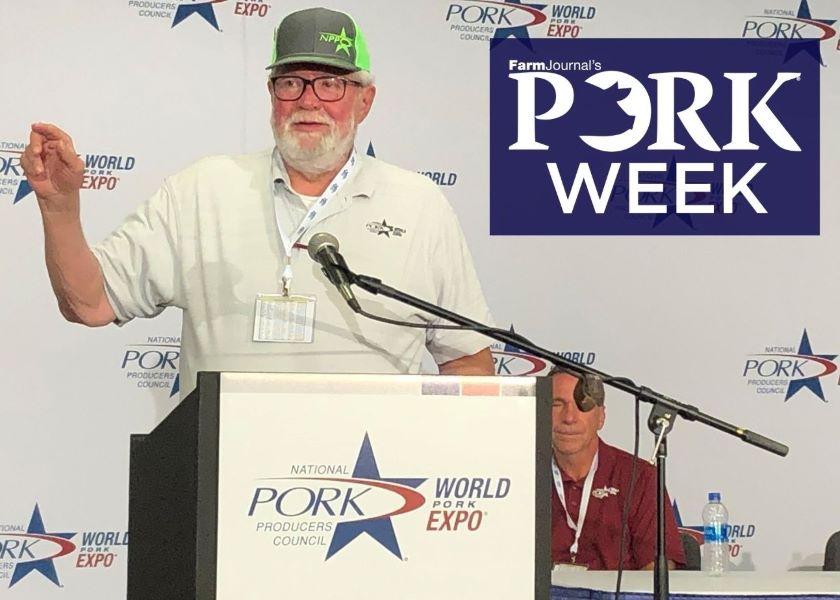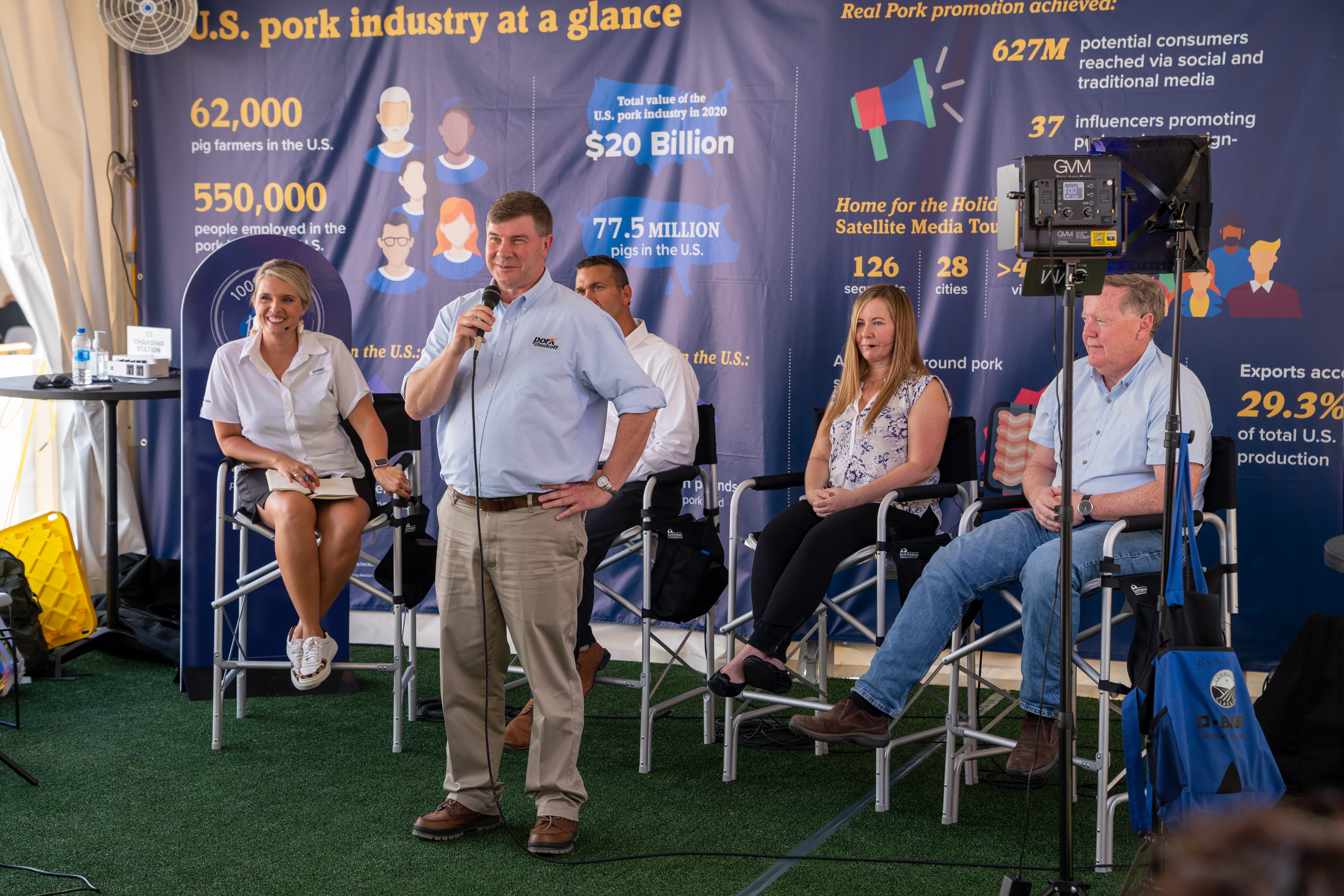What’s Top of Mind For U.S. Pork Leaders?

Last June, the pork industry looked much different, says Bill Even, CEO of the National Pork Board. Although it was a stressful time, the incredible resiliency of pork producers and the U.S. pork system was evident.
“It was scary. It was worrisome. It was stressful. And for a number of people, it created incredible financial hardships. But we found that farmer-led solutions and scrappiness at all levels really helped people adapt on the fly,” Even says.
What a difference a year makes indeed with nearly record-high hog prices, record-high pork cut-outs, incredible volatility in the grain markets on the feed side, the high cost of lumber, steel and concrete.
“Most producers are taking a wait-and-see attitude, even though prices are high,” Even says. “The producers we speak with are telling us they are redoubling their biosecurity protocols and their productivity measures. Like farmers everywhere, they increase their sustainability by increasing their productivity, but that's going to be done more through management now than it would be adding on additional barns.”
U.S. pork producers had about four or five years of some “pretty tough sledding” related to profitability, says National Pork Producers Council (NPPC) CEO Neil Dierks.
“There is profitability now,” Dierks says. “Of course, some of that is also being challenged, because we are all aware of what's happened in the feed industry as far as costs go. But producers have had some time to heal, however they aren't back to where they were at.”
Even and Dierks reflect on six things that are top of mind for them in the pork industry.

Bill Even welcomes the crowd at the taping of the U.S. Farm Report during the World Pork Expo.
Demand
“With people staying at home, there was a rediscovery of cooking at home. That meant people went to the grocery store and the impact on demand was phenomenal,” Dierks says.
Despite lost food service business during the pandemic, increased demand through retail was very strong and continues to be strong.
“The positive is good demand. I have to point out our current hog markets aren't because we had a huge problem with production or supply of animals. It's because of demand,” Dierks says.
Proposition 12
“Proposition 12 is causing a tremendous amount of uncertainty in the industry. And that will continue,” Dierks says. “You have entities in California trying to figure out how are they going to do this. And the proposition of this whole thing was the fact that in order to sell product, it had to meet these requirements from Prop 12. It didn't say this is just for California producers, it said any pork sold,” Dierks says.
That is why NPPC is challenging California’s Proposition 12. NPPC says it will impose arbitrary animal housing standards that reach far outside the state’s borders to farms across the country, while driving up costs for both pork producers and consumers. NPPC and the American Farm Bureau Federation have filed a lawsuit in the U.S. Court of Appeals for the Ninth Circuit, asking the court to strike down Proposition 12 as unconstitutional under the dormant commerce clause.
“Our position has always been that producers should have a choice on what works in their farms, and consumers should have a choice,” Dierks says.
Image
“One of the more exciting things we're seeing in the pork industry right now is the talk about Real Pork. The Pork Checkoff created this trust and image brand as a way for the producers to essentially come back out of this pandemic,” Even says.
This campaign is fundamentally different than anything the Pork Checkoff has done in the past, he adds.
“Real Pork is a way to give a voice to real farmers on real farms that have real pigs that produce real pork,” Even says. “It's about giving a voice to the producer and talking to the consumer who loves our product, but also has questions about how that product is raised. It’s a way to enter those conversations in an entirely different fashion.”
Line Speed Ruling
The federal court’s recent decision—which takes effect on June 29—struck down a provision of USDA’s New Swine Inspection System (NSIS) allowing for faster harvest facility line speeds. At a time when the U.S. is seeking to increase much-needed pork harvest capacity, the court order will reduce plant capacity at six plants running at NSIS line speeds by as much as 25%.
"We've been encouraging the government and our administration to appeal this decision. NPPC still believes the administration should appeal this rule," Dierks says. "There are other possibilities as we go forward, but our hope is that there could be some resolution to this."
Dierks says recent studies have shown the reduction of line speeds won't improve worker safety like proponents of the line speed change claim. He says ultimately, it will be smaller producers impacted most if the reduction in line speeds stand.
Sustainability
“You look at the supply chain, and it doesn’t matter if it’s coming from government with government policy around sustainability and carbon, conversations with grocery stores and food service restaurants, conversations with packers and processors, and the consumers themselves,” Even says. “They're all asking questions about ‘Tell me more about how the pork industry is truly sustainable.’”
The National Pork Board has pilot projects underway in five states with producers to collect on-farm sustainability data, Even says, with the goal of verifying producers’ commitment to continuous improvement.
“I think that's a pretty exciting thing that no one's talking about, but it's going to make a fundamental difference for market access for U.S. producers going forward,” he adds.
We will be uniting together June 7-13 for PORK Week across all of our Farm Journal platforms to elevate the important role the pork industry plays in feeding the world. Share your stories and post photos on social media using #PORKWeek21 to help us honor the pork industry. From “AgDay TV” to “AgriTalk” to “U.S. Farm Report” to PorkBusiness.com and everything in between, tune in and join us as we acknowledge the most noble profession there is: feeding people.
More from Farm Journal's PORK:
Celebrate #PORKWeek with Farm Journal’s PORK
Behind the Scenes with 5 State Pork Executives
Is This Year’s PRRS Better or Worse?
Modern Mythbuster: Eric Stonestreet Sets Out to Bust Pig Farming Myths







